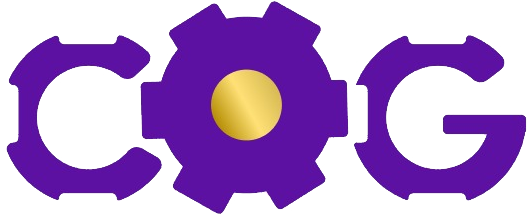Ever wondered how tasks flow from the top of an organization down to the front-line employees, or how decisions made at the highest level affect the work you do every day? Understanding the reporting structure in your workplace can give you a clearer picture of all this and more. Reporting structures, or organizational hierarchies, define the lines of authority and communication within a company. This system not only specifies who reports to whom but also impacts team dynamics and overall operational efficiency. By unraveling the intricacies of reporting structures, you’re equipped to navigate your organization more effectively and contribute positively to your team’s success.
Importance of Reporting Structure
Definition and significance
A reporting structure in an organization refers to the system that outlines who reports to whom and the chain of command that facilitates effective communication and decision-making. It is a foundational element of organizational hierarchy that helps clarify roles, responsibilities, and expectations across all levels. With a well-defined reporting structure, everyone within the company understands their place in the broader context of the organization’s goals, which leads to a more streamlined operation and greater workplace harmony. A clear reporting structure ensures that tasks are completed efficiently and information flows smoothly from one level of the organization to the next.
Benefits of a clear reporting structure
Implementing a clear reporting structure within an organization can significantly enhance operational effectiveness and employee satisfaction. Here are some of the benefits:
– Improved Communication: A well-defined reporting path simplifies who should communicate to whom, reducing miscommunications and ensuring that important information reaches the right people quickly.
– Enhanced Efficiency: Clear delineation of responsibility helps prevent overlap and confusion, allowing tasks and projects to move forward without unnecessary delays.
– Accountability: When employees know who they report to, it is easier to hold them accountable for their performance, which can help in maintaining high standards across the organization.
– Career Development: A transparent structure provides employees with a clearer understanding of their career advancement paths within the organization, which can motivate them to perform better and engage more with their roles.
– Conflict Resolution: With clear reporting lines, it becomes more straightforward to manage conflicts or issues that may arise, as there is a defined route through which these problems can be escalated and addressed.
Understanding Organizational Hierarchy
Levels of hierarchy
The organizational hierarchy of a company can vary depending on the size and nature of the business, but typically, it starts with the board of directors at the top, followed by C-level executives, middle management, and then frontline employees. Each level plays a critical role in supporting the ones above and below it:
– Board of Directors: Typically oversees the overall operation and strategy of the organization, ensuring it aligns with stakeholder interests.
– C-level Executives: Includes positions like CEO, CFO, and COO, who are responsible for making major corporate decisions, managing the overall operations and resources of a company, and acting as the main point of communication between the board of directors and corporate operations.
– Middle Management: Managers and directors within this layer bridge the gap between executives and the broader employee base, translating strategic goals into operational plans.
– Frontline Employees: These are the individuals who carry out the day-to-day tasks that are essential for the company’s operations.
Role of each level in the reporting structure
Each level in the organizational hierarchy has a distinct role in the reporting structure, contributing uniquely to the organization’s success:
– Board of Directors: Sets the company’s vision and policies and reports to the shareholders.
– C-Level Executives: Develop strategies that align with the visions of the board and communicate these plans down through the hierarchy while reporting outcomes and challenges up to the board.
– Middle Management: Acts as a filter and a conduit, providing support to team members while also ensuring the team’s compliance with the strategic directions from above. They play a crucial role in reporting team performance and operational issues to senior management.
– Frontline Employees: While they do not typically have direct reports themselves, frontline employees are vital in providing ground-level data and results, which fuel the reports moving up through the hierarchy.
Understanding this structure is fundamental to appreciating how decisions flow through an organization and how responsibilities are segmented.
The Chain of Command
 Image courtesy: Pexels
Image courtesy: Pexels
Definition and purpose
The chain of command in an organization refers to the formal line of authority, extending from the highest to the lowest levels, which clarifies who reports to whom and who makes decisions in various scenarios. It is a cornerstone of organizational hierarchy, designed to maintain order, improve efficiency, and ensure that both strategic goals and daily operations are managed effectively. This structure not only streamlines communication and decision-making processes but also solidifies accountability and responsibility throughout the organization. By establishing a clear chain of command, organizations can avoid confusion and overlap in responsibilities, which is essential for smooth operations.
Examples of a chain of command in different industries
The chain of command can vary significantly across different industries, reflecting unique operational needs and business environments. For instance, in the military, this structure is highly rigid and hierarchical, vital for maintaining discipline and a clear command during missions. Decisions flow from the top (senior officers) down to the enlisted soldiers, with each level having distinct, well-defined roles. Contrastingly, in a tech startup, the chain of command might be less formal and more fluid, designed to foster innovation and quick decision-making. Here, team leaders may report directly to the CEO but have more autonomy in their projects. Meanwhile, in healthcare, the chain of command is crucial for patient safety and care. Doctors, nurses, and specialists work in a coordinated manner, where administrative roles clear paths for medical professionals to make primary care decisions.
Team Dynamics within Reporting Structure
How team dynamics influence reporting structure
Team dynamics significantly influence the effectiveness of a reporting structure in any organization. Positive dynamics such as trust, clear communication, and shared goals can streamline the flow of information up and down the chain of command, enhancing decision-making and responsiveness to issues. However, negative dynamics like mistrust, poor communication, and conflicting agendas can obstruct this flow, resulting in inefficiencies and conflicts. The reporting structure must be adaptive to these team dynamics, offering mechanisms to resolve conflicts and promote a positive, collaborative environment. This adaptability ensures that the structure supports rather than hinders organizational performance.
Strategies for improving team dynamics within a reporting structure
Improving team dynamics within a reporting structure involves intentional strategies focused on communication, inclusion, and mutual respect. Here are a few effective approaches:
– Regular Training and Team Building: Conducting workshops that emphasize the importance of effective communication, leadership skills, and collaborative problem-solving can strengthen team connections and enhance mutual understanding.
– Transparent Communication: Implementing open communication channels where team members can voice concerns and share insights without fear of reprisal helps in building trust and clarity within the team.
– Recognizing and Utilizing Individual Strengths: When team members are assigned roles that align with their strengths and interests, it can increase job satisfaction, efficiency, and the quality of work.
– Encouraging Feedback: Establish a culture where feedback is viewed positively and used constructively to make adjustments in team interactions and processes.
By focusing on these strategies, organizations can foster a supportive atmosphere that enhances team dynamics and effectively utilizes the reporting structure to achieve business objectives.
Effective Communication in Reporting Structure
Effective communication within a reporting structure is crucial for the smooth functioning of any organization. It ensures that information flows correctly from the top down and feedback travels upwards without any distortion or delay.
Importance of communication within a reporting structure
In the framework of organizational hierarchy, effective communication strategies are the glue that holds the reporting structure together. A clear communication line helps in reducing misunderstandings and ensures that everyone is on the same page regarding the organization’s goals and methodologies. It plays a pivotal role in task delegation, performance evaluation, and in fostering an environment where ideas can be shared freely. Such open environments often lead to increased employee satisfaction and productivity.
Tips for enhancing communication channels in the workplace
Improving communication within a reporting structure can be approached through several practical steps:
– Regular Updates: Schedule regular meetings and written updates to keep everyone informed about ongoing projects and changes within the organization.
– Clear Expectations: Clearly define the roles and responsibilities for each team member. This clarifies who reports to whom and the expectations associated with their roles.
– Feedback Mechanisms: Implement open and anonymous feedback mechanisms that encourage employees to express concerns and suggestions.
– Training Programs: Conduct workshops and training sessions to educate employees on effective communication techniques and the importance of maintaining clear communication channels.
– Technology Utilization: Leverage technology to facilitate communication. Tools such as Slack, Microsoft Teams, or Asana can help in managing projects and keeping track of communications and responsibilities.
Challenges in Reporting Structure
 Image courtesy: Pexels
Image courtesy: Pexels
Like any other organizational framework, reporting structures come with their set of challenges that can impede the smooth operations and dynamics of a team.
Common challenges in a reporting structure
Some of the most typical challenges include:
– Miscommunications: Even a minor miscommunication can lead to significant issues, causing projects to falter and leading to distrust within the team.
– Bottlenecks: Sometimes, information or decisions can get stuck at certain levels of the hierarchy, slowing down operations and frustrating employees.
– Overlapping Responsibilities: Without clear definitions, roles can overlap, leading to confusion and inefficiency.
– Resistance to Change: In some cases, reporting structures might need updating, but resistance from staff can hinder such changes, affecting adaptability and growth.
Solutions to overcome reporting structure challenges
Addressing these challenges involves a proactive approach with strategic planning:
– Clarify Roles and Communication Paths: Regularly review and update roles and responsibilities, and ensure they are clearly communicated to all team members.
– Implement Scalable Solutions: Use tools and software that grow with your company and help in handling increased communication needs efficiently.
– Encourage Open Dialogue: Foster an environment where employees feel safe to discuss their issues regarding the reporting structure. This can help identify problems before they become critical.
– Leadership Training: Train leaders within the organization to recognize and address inefficiencies and to mentor others on navigating and optimizing the reporting structure.
By understanding and addressing the complexities of reporting structures and communication strategies within them, organizations can create a more harmonious work environment that promotes productivity and employee satisfaction.
Understanding the reporting structure in any organization is crucial for ensuring that everyone knows who they are accountable to and how they fit into the larger team and organizational goals. An efficient reporting structure facilitates clearer communication, smoother workflow, and more effective team dynamics. By aligning the organizational hierarchy and the chain of command clearly, companies can enhance both employee satisfaction and organizational performance. Always consider revisiting and adjusting the reporting structure as the organization evolves to maintain effectiveness and adaptivity.


